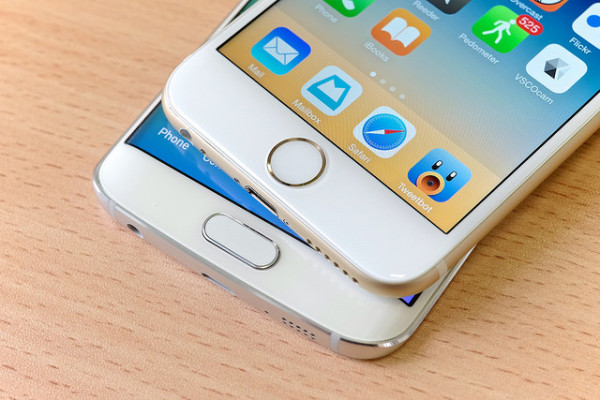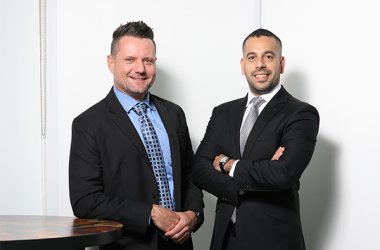 Samsung Electronics and Apple remained the top semiconductor buyers in 2015, representing 17.7 percent of the market, according to Gartner. Samsung Electronics and Apple together consumed $59.0 billion of semiconductors in 2015, an increase of $0.8 billion from 2014.
Samsung Electronics and Apple remained the top semiconductor buyers in 2015, representing 17.7 percent of the market, according to Gartner. Samsung Electronics and Apple together consumed $59.0 billion of semiconductors in 2015, an increase of $0.8 billion from 2014.
“Samsung Electronics and Apple have topped the semiconductor consumption table for five consecutive years, but the growth of Samsung’s design total available market (TAM) was lower than the total semiconductor market in 2014 and 2015,” said Masatsune Yamaji, Principal Research Analyst, Gartner. “Samsung and Lenovo, the fastest-growing companies over the last five years, decreased their design TAM in 2015 and the risk of revenue declines from the strongest customers for semiconductor chip vendors is increasing.”
The top 10 companies bought $123 billion of semiconductors, to account for 36.9 percent of semiconductor chip vendors’ worldwide revenue in 2015. This was down from 37.9 percent in 2014, which was worse than the semiconductor industry’s global total decrease of 1.9 percent.
Preliminary ranking of top 10 companies by Semiconductor Design TAM, Worldwide, 2015 ($M)
| 2014 Ranking | 2015 Ranking | Company | 2014 | 2015 |
Growth (%) 2014-2015 |
2015 Market Share (%) |
| 1 | 1 | Samsung Electronics | 30,989 | 29,867 | -3.6 | 8.9 |
| 2 | 2 | Apple | 27,177 | 29,116 | 7.1 | 8.7 |
| 4 | 3 | Lenovo | 13,743 | 13,329 | -3.0 | 4.0 |
| 5 | 4 | Dell | 10,880 | 10,686 | -1.8 | 3.2 |
| 3 | 5 | HP Inc. | 15,616 | 8,634 | -44.7 | 2.6 |
| 7 | 6 | Huawei | 6,040 | 7,020 | 16.2 | 2.1 |
| 6 | 7 | Sony | 7,631 | 6,947 | -9.0 | 2.1 |
| – | 8 | Hewlett Packard Enterprise |
0 |
6,473 |
– |
1.9 |
| 9 | 9 | LG Electronics | 5,743 | 5,533 | -3.7 | 1.7 |
| 8 | 10 | Cisco Systems | 5,817 | 5,430 | -6.7 | 1.6 |
| Others | 216,695 | 210,684 | -2.8 | 63.1 | ||
| Total | 340,331 | 333,718 | -1.9 | 100.0 |
Note: Some columns do not add to totals shown because of rounding.
Source: Gartner (January 2016)
The market decline happened partly because HP spun off its enterprise business, which bumped Toshiba from the top 10. Toshiba’s design TAM in 2015 was $4.6 billion, so the top 10 companies in 2014 (including HP, Hewlett Packard Enterprise and Toshiba) represented $127.6 billion of semiconductors in 2015 on a design TAM basis, to account for 38.2 percent of semiconductor chip vendors’ worldwide revenue.
As the growth of the personal electronic device market continues to slow, the risk of revenue declines from the strongest customers for semiconductor chip vendors is increasing. Many semiconductor chip vendors, especially general-purpose chip vendors, are trying to reduce the dependency on a limited number of extremely large customers, such as Samsung Electronics, Apple and Lenovo, and are making an effort to diversify their sales targets to the fragmented long-tail small customers, so as to stabilize their business growth with a mass-marketing approach.
“Nine of the top 10 companies in the design TAM ranking for 2014 remained in the top 10 in 2015, but seven of the top 10 decreased their semiconductor demand in 2015,” said Yamaji. “The slowing of Samsung’s design TAM since 2014 should be considered a big trend change. The cycle of an inflated boom and the obsolescence of electronic equipment are becoming faster, and it is also much more difficult for leading companies to maintain their position for a long time. Current winners may not always be the winners in the future.”





